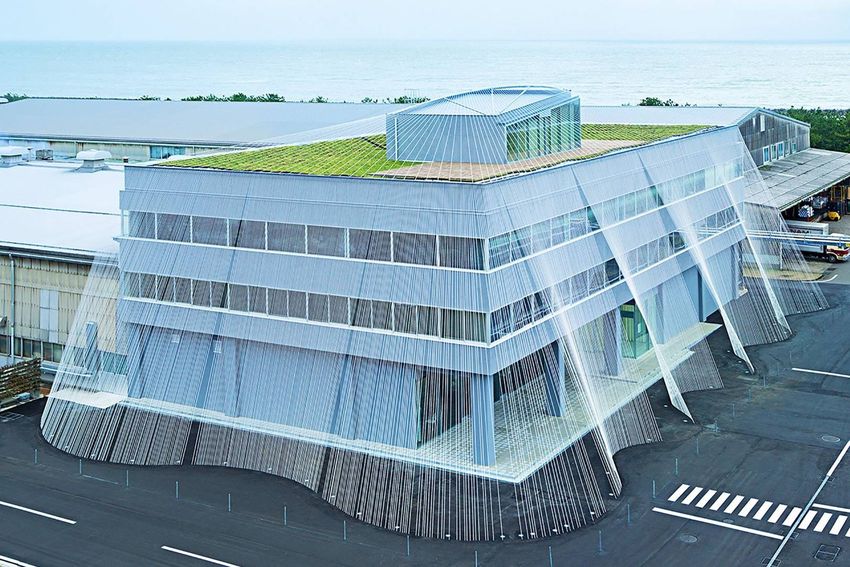Earthquakes are among the most destructive natural disasters, capable of toppling buildings and causing immense loss of life and property. However, with modern engineering techniques, we can design earthquake-resistant buildings that minimize damage and protect occupants.
In this article, we will explore how earthquakes affect structures and the key engineering principles behind earthquake-resistant buildings.
1. How Do Earthquakes Affect Buildings? 🌍💥
When an earthquake occurs, seismic waves shake the ground in different directions. This movement creates forces that act on buildings in three main ways:
🔹 Lateral (Side-to-Side) Motion – The ground moves horizontally, causing buildings to sway.
🔹 Vertical Motion – Structures are pushed up and down, stressing foundations.
🔹 Torsional (Twisting) Motion – Irregularly shaped buildings experience uneven forces, leading to structural failure.
Without proper design, these forces can lead to:
❌ Foundation failure – The ground beneath the building shifts.
❌ Structural collapse – Weak walls and supports break apart.
❌ Resonance effects – If a building vibrates at the same frequency as the earthquake, shaking is amplified.
To prevent such disasters, engineers use advanced earthquake-resistant technologies.
2. Key Features of Earthquake-Resistant Buildings 🏗️🔧
Modern earthquake-resistant buildings use several design principles and special materials to withstand seismic forces. Here’s how they work:
a) Strong & Flexible Foundations ⚒️
A strong foundation ensures that the building remains stable during an earthquake. Engineers use:
✔️ Deep Pile Foundations – Extend into the ground for better stability.
✔️ Base Isolation Systems – Flexible bearings (rubber, lead, steel) absorb seismic shock and reduce shaking.
Example: The Tokyo Skytree has a central pillar base isolation system that absorbs shocks from earthquakes.
b) Damping Systems: Absorbing Shock 💨
Damping systems reduce vibrations by absorbing and dissipating seismic energy. Common types include:
✔️ Tuned Mass Dampers (TMD) – Heavy pendulums inside skyscrapers counteract shaking. (Used in Taipei 101, Taiwan 🇹🇼)
✔️ Viscous Fluid Dampers – Large pistons filled with oil or silicone slow down vibrations. (Used in many bridges and towers.)
These systems act like shock absorbers, stabilizing the building.
c) Flexible Materials & Reinforcements 🦾
Buildings must be strong yet flexible to bend without breaking during an earthquake. Engineers use:
✔️ Reinforced Concrete (RCC) – Contains steel bars (rebar) for extra strength.
✔️ Ductile Steel Frames – Allow movement without collapsing.
✔️ Cross-Bracing Systems – X-shaped steel beams add stability. (Used in skyscrapers and bridges.)
d) Seismic-Resistant Building Shapes 🏢
The shape and design of a building greatly affect its earthquake resistance.
✔️ Symmetrical Designs – Equal weight distribution reduces twisting.
✔️ Low & Wide Buildings – More stable than tall, narrow ones.
✔️ Lightweight Roofs – Reduce stress on the structure.
Example: Traditional Japanese pagodas have multiple flexible layers that prevent collapse during earthquakes.
3. Innovations in Earthquake-Resistant Technology 🚀
With advancements in engineering, modern buildings incorporate cutting-edge earthquake-resistant technologies:
🔹 Smart Materials – Self-healing concrete and shape-memory alloys improve durability.
🔹 Seismic Isolation Pods – Elevate buildings slightly, separating them from ground vibrations.
🔹 Artificial Intelligence (AI) Sensors – Monitor structural health in real-time and detect weaknesses.
These innovations help prevent disasters and save lives.
4. Examples of Earthquake-Resistant Structures 🌎🏛️
Many famous buildings have been designed to withstand major earthquakes:
🏢 Taipei 101 (Taiwan 🇹🇼) – Uses a 660-ton tuned mass damper to absorb shocks.
🌉 Golden Gate Bridge (USA 🇺🇸) – Retrofitted with seismic-resistant cables and reinforcements.
🛕 Tokyo Skytree (Japan 🇯🇵) – Inspired by ancient pagodas, with a flexible central pillar.
These structures demonstrate how engineering can protect cities from seismic disasters.
Conclusion 🏗️🌍
Earthquake-resistant buildings are a combination of science, engineering, and innovation. By using strong foundations, damping systems, flexible materials, and smart designs, engineers can minimize damage and save lives.
As technology advances, future buildings will become even safer and smarter, ensuring resilience against natural disasters.


